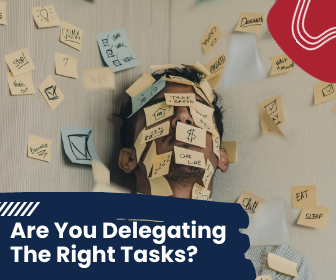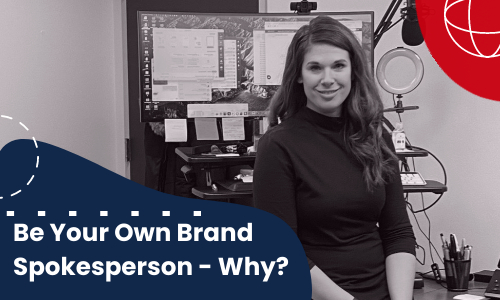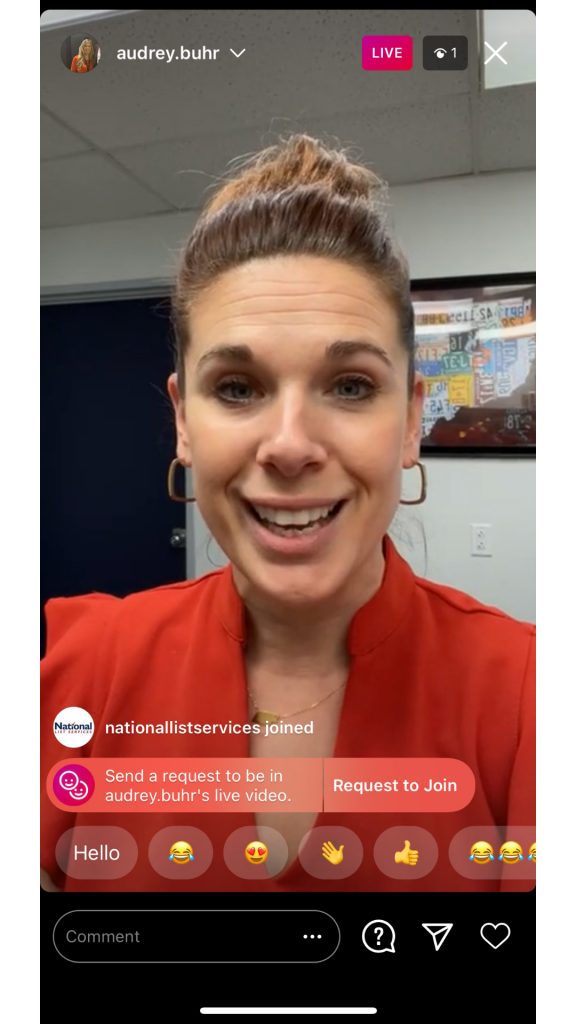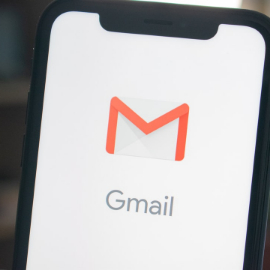What Tasks Should You Delegate To Other Businesses?

Our podcast, BeGrowthDriven, this week was all about things that are valuable to delegate to other businesses. Here the 5 things that we (and our guest Joe Camacho) found to be at the top of the delegation list!
Why Delegation?
We aren’t talking about just task delegation here. The delegation we are talking about is bigger than that. It can be easy an entrepreneur to try and wear all the hats yourself. We get that. However, there’s a lot of things that aren’t, uh, necessarily in your wheelhouse that can suck up a lot of time and effort. Delegation or farming out those tasks can free up your time so you can focus on the things you need to do to grow your business.

A lot of people hesitate to delegate some of these tasks because they think that if take care of it themselves, it will save money. That’s not always true. Sometimes short-term saving has long term costs.
Obviously, every company has different specialties so the tasks that need delegating will be different. However, these 5 are things that often fall into the category of thing that small companies try to do themselves and then up regretting it later.
#1 All the IT stuff
In this digital age, some IT services are a requirement. If you don’t know how to set up behind the scenes of a website or cloud services, it can be very time consuming (and expensive) to learn. There are so many companies and entrepreneurs who focus on IT services and management. They can help! Having it don’t right in the beginning will make it easier for the future.
#2 Compliance
Every year more and more regulations are added to the internet. Regulations about data usage, cookies, accessibility, etc. There are even more regulations if you are in specifics fields such as the medical and health industry. If you break a rule you didn’t even know was there can have serious consequences! Delegating compliance services to a specialist makes sure you don’t have any nasty surprises down the road.
#3 Branding
Branding is more than just a logo. It’s the entire outward facing personality of your brand! It can be difficult to look at your brand objectively, which is one of the reasons while delegating branding is a good idea! A graphic designer or branding agency knows the right questions to ask to help you figure out who your brand is. And they know all the technical things that need to happen to make sure your branding has the pieces you need to grow your business.

#4 Web Design
There are soooooo many free (or cheap) web design tools out there and honestly, some of them are really great! However, designing a website can be a lot more complicated than it appears. There’s a lot of technical aspects behind the scenes. Things like DNS and Domain Hosting are time consuming to learn how to set properly. Web design can be overwhelming and frustrating if it’s out of your element and might be worth delegating.
#5 Digital Advertising
Digital advertising is a massive field. There’s digital display, and programmatic adverting, and social media. There are entire agencies that do only Facebook ads! It can be difficult to know where to begin with online advertising: What software should you use? What’s the right channels for your business? What creative will work best? How much money should you invest? Where should you send the traffic you acquire? Delegating your digital ads will help you make money!
Some of these tasks we do for clients but others we delegate out ourselves! The key is to know what’s the best use of your time.
Did we miss any good tasks to delegate? Let us know!
Be Your Own Brand Spokesperson – Why?

While branding your company most people focus on things like logos, colors, message. Which is all super important! However, in this visual digital world we are living, putting a face to the name (or brand, in this case) is very valuable. For example, pictures with faces in them are on average 38% more likely to get likes and 32% more likely to receive comments.
Here’s some specific reasons to use your face in branding and ways to do so!
Why Showing Your Face Helps Your Business
Here are 4 reasons!

- Using your face helps brand recognition
There’s a reason why brands use spokespeople. It is often easier for people to remember other people than it is to remember brands or companies. - It humanizes your brand
People like to work with people, not “soulless corporations.” Connecting your face to your company makes it easier for customers to relate to you and build an emotional connection. This is one reason why it’s helpful to use your face. Chances are that you and your company share the same values and goals. Having that message come from you and the company reinforces those ideals and helps other care about them too!
Another aspect of humanizing your brand is the trust that comes with it. It’s much easier to trust a person than a company; you know who they are and what they stand for. Linking you to your brand pulls that trust over.
- It creates engagement
Knowing who they are engaging with makes it easier for customer to connect with you on social media. Also, our brains are literally wired to find faces so putting your face front and center will help draw people to your content.
- It helps shape your community
This may sound confusing but linking your face and your brand can help create a more accurate and diverse business community. We all play a part in shaping the communities we are a part of. All of us have a story or journey to share. Highlighting your story along with your company story creates diversity. And you never know who your story will touch!
How to put your face front and center

Here’s some tips to get started
Show behind the scenes
Pull back the curtain on your day to day. Everyone loves behind the scenes. Showing what you are doing is a good way to ease into using your face for marketing. It’s can be simple to do, just bring your audience along to your tasks! It’s a good way for people to get to know you and all the things you. It also can help your customers appreciate all you do!
Use stories!
Stories is a great place to show all those behind-the-scenes shots. It’s also a great place to speak to the camera about your company and your mission. Stories get a lot of engagement but disappear after 24 hours so there’s a lot less pressure! To make it easier on yourself, prerecord your videos. Make “eye contact” with the camera, don’t look at your own face. Have a general idea of what you want to say, a bullet point list helps! And don’t worry about any word whiskers. The point of this is to help people get to know you and show authenticity. It doesn’t have to be perfect!
Go Live!
You might be surprised by how much more engagement live videos get! Unlike prerecorded videos, live streams make viewers feel like they are a part of the conversation. The more authentic interactions create more engagement. For example, on average, live content generates 10x more the comments that prerecorded videos. And people tend to watch live content 10-20x longer.
We want to see your face! How do you connect your personal brand to your company brand?
How Your Flow State Can Help Productivity

When was the last time you felt fully engaged in a task and the hours just melted away? That’s called your flow state, something that psychology researcher Mihaly Csikszentmihalyi, from Claremont Graduate University in California, identified. Here’s how your flow state can help your productivity!
Flow is simply that state of mind in which we feel and perform our best and feel at ease. We don’t have to wait for a flow state to happen — we can take steps that can allow us to access it.
Here are the 2 steps needed to tap into your flow state.
- First, you must observe yourself. For the next two weeks, observe yourself, notice what you’re doing, and look for the clues of flow: losing your sense of time or self, feeling that you’re acting with ease, gaining new insights, and having a positive feedback loop.
- Then, when you are in a state of flow, broaden your awareness: Notice and remember the activities surrounding you. Recognize what you’re physically doing and think about what you’re doing mentally.
Tell us your tips and tricks for staying productive!
How To: Be A Team Player

Today the people in our work teams might be spread out across the country – or the world. It is easy to take it for granted that because of technology, we are able to work together and solve problems no matter where we are physically. The need for good teamwork will always be a necessity. What can you do to be good team player and help your team run smoother?
- Be humble. Unsurprisingly, being a good team player means not focusing on yourself or thinking that your ideas are the best. On the flip side, not having confidence in your ideas is also a violation of humility. As the saying goes: “Humility isn’t thinking less of ourselves; it’s thinking about ourselves less.”
- Be hungry. Be willing to hustle. People who have a strong work ethic are often successful on teams because they don’t do the bare minimum. They want to do more than expected. When everyone on a team works hard, things go smoother.
- Be smart. Have common sense. Think before you speak. Think about what effects your actions will have on the project and on your team members.
It’s important to be able to identify what gaps your team has. And to look at yourself and see what you can to do make things run smoother.
What have you found to help your team run smoother?
What’s Working in Marketing- 2020?

Eleven months into 2020, it is safe to say, this year has had a lot of surprises. So, what has working in marketing this year? Here is what we have found:
1) Customer Experience driven marketing. This encompasses a lot of things. The main things that we have found to be successful in 2020 are brand storytelling and personalization.

Our brain is literally wired to seek out and respond to narratives. And no matter what is happening around us, that isn’t going to change. We are going to connect and respond better to brands that tell us a story and bring us along on a journey. How are some companies implementing this strategy? YouTube series, podcasts, active social medias are popular first steps. (Learn more about customer journey’s here.)
Personalization is a big key in reaching your customer’s heart. Using the customer’s name in things like email subject lines is a good first step. Beyond that you can use audience segmentation to separate your audience into groups that share common characteristics like demographics and behavioral information. Using your audience segments to target your message to things that each group are actually invested in can greatly increase how personal your marketing will feel to the customer.
Utilizing Multi and Omni channel marketing strategies will also increase how smooth your brand experience is for your customers. (Learn more about building audiences here and here.)
2) Email. More than 50% of people in the US check their personal email over 10 times a day. Most people say that it is their preferred way to communicate with brands. Although “the end of email” has been threatened may times in recent years, 2020 has shown us that email isn’t going anywhere soon. For many companies, email became the only way they could communicate with their customers this year.

That means the margin for error with sending emails is relatively small. So. don’t forget to preview your email with different providers and devise before your send!
(Here are more email tips and tricks.)
3) Responsible consumerism and business practices. More than ever, consumers are aware of the effect their purchases have on the environment and on society and they want to buy from companies whose values align with theirs. People expect companies to actively fight injustices and be visibility support causes.
What has worked for your marketing this year?
How to Increase Your Adaptability

If this year has taught us anything it’s that being to react well to inevitability of change is a must-have trait. In venture investor Natalie Fratto’s TED Talk on adaptability, she focused on how we can work on a becoming more adaptable in the workplace.
Here are her three suggestions:
- Be proactive. Fratto says,“Adaptability has to be proactive, not reactive. We have to seek it out, exercise it and flex it like a muscle.” How can you seek out adaptability? Start by looking for gaps in your organization that need filled. For example, is your team having a hard time communicating with the podcast team? Take the opportunity to learn about podcasts and help bridge the communication gap. Putting yourself in a position to help can make it easier to adapt to new roles later.
- Look at things from another point of view. Being agreeable can actually be the opposite of adaptability. Occasionally (and respectfully) playing the devil’s advocate can help you and your team see things from a different viewpoint. This can prevent you from getting to attached to your opinions or view. Not being stuck to ideas promotes flexibility and creativity.
- Remember the times you changed your mind. “It’s helpful to write down the times where you were wrong, changed your mind, or made mistakes,” says Fratto. Instead of viewing the times you’ve made mistakes as negatives, view them in a more positive light. Focus on what you learned and how you were able to grow.
What ways have you had to adapt this year?
Can You Trust Your Data?

No matter how good the machine you build it is, it’s not going to run well if your fuel is poor quality. Data is the fuel the runs all marketing. The problem is, data error is commonplace. Data providers are all trying to give their clients the best data possible but often the data they are providing doesn’t match up.
Harvard Business Review did a study in May 2020 to test the accuracy of consumer data. They found that the accuracy of Demographic data was particularly disappointing. Most were only around 50% accurate. For example, the average accuracy of gender segments classifying males was only 42.5%.
“Half the money I spend on
– department-store magnate John Wanamaker (1838-1922)
advertising is wasted; the trouble is,
I don’t know which half.”

What do those errors mean for your campaign? A study by Forrester Consulting on behalf of Marketing Evolution in fall 2019 found that “marketers estimate that 21 cents of every media dollar spent by their organization in the last year was wasted due to poor data quality, which translates to a $1.2 million and $16.5 million average annual loss for mid-size and enterprise organizations, respectively.”
How do a few errors on a record level equal so much wasted money? Record level data is the spring from which everything else flows. For a small example, if a few records in your CRM have mistakes in them, what is going to happen when you use them to send an email campaign? The opens and clicks from your email campaign may inform your audience for your social campaign. In every step and trigger along your campaign, the small errors effect more and more information downstream.
The company Truth Set is looking to minimize error across all data. How? By providing a third – party consumer report type service for data providers and marketers. Truth Set goes through every record available and assigns a percentage rating to all the attributes, such as ‘percentage that this record is actually male.’ That way, marketers won’t waste money on inaccurate data and data providers can keep their data clean.

The hope is that as more time goes on, third party quality checks and ratings will become commonplace and shrink margin for error unilaterally.
What can you do make sure your data is accurate? There are a few easy identifiers you can check for. How old is the data? How transparent is the provider with where the data came from? How consistent and relevant is it?
What changes do you think would make it easier for marketers to trust their data?
Marketing Tactics That Will Actually Make You Poor
 It’s so frustrating.
It’s so frustrating.
You heard some advice that really seemed to make so much sense, so you go for it. All in, 100%.
But then you grind and grind and nothing happens. You stay up late and hustle for every single response. It’s like you’re spinning your wheels, not getting anywhere.
What’s the problem? Does the idea even work?
Good news: marketing still works, and really well. Don’t give up. But there are a lot of popular tactics that won’t move the needle.
So why not ditch the useless ideas and start upping your game (and results) with what’s actually working? But to do this, you need to recognize these tactics that make you poor.
Here’s the first one…
Investing In That New Thing Because Everybody’s Doing It
Take AI, for example. Accenture Interactive says 80% of B2B marketers feel AI will revolutionize marketing.
Yet Andrew Stephen, writing for Forbes points out:
Look how easy it is to get Siri or Alexa confused – just ask the wrong question. Data quality is a huge issue. Garbage in, garbage out. If you feed poor marketing data to AI, you fail to get results.
Another big issue? Nobody agrees on the terminology yet.
Greedy sharks are throwing out fancy tech words and making big promises… But if you don’t carefully find out what they’re talking about, you’ll get sucked in. All your money gone. Nothing in return.
Slap together an audience selection tool, choose a few triggers, time a few messages and voila! A brand new “AI” thing with a big price tag. “Of course you should buy it,” they say. “Everybody’s getting into AI.”
Newsflash: it’s not really AI. And marketers have been using this simple, relatively inexpensive process (audience selection, triggers, message timing) for years.
Yes, you should innovate, disrupt and adopt new things, but… how much more profitable to ask yourself first: Where’s my business really at? What growth stage am I in?
If you’re a small business or just starting out, you definitely don’t need an advanced-stage marketing tactic with a high-dollar price tag on it. No matter how successful people say it is.
What to do instead?
Go back to the basics. Look at the marketing that’s always worked and still does: Pick up your phone and call people. Send emails. Leverage direct mail. There’s a far more predictable success rate here.
People know this, but why do so many still avoid what works?
It’s because you’re told to…
Just Do The Marketing That’s Comfortable
Maybe you hate selling face to face. Or on the phone. That’s why those supposedly enlightened gurus say, “Do what you love.” True, it helps to be excited about your work. And you should always sell yourself on what you’re doing.
But if you take these “follow your passion” phrases literally, you’re on a road that leads to…dead broke. So many of these traditional-marketing haters decide that digital is the only way to go, so they…
Hide behind the keyboard and pray to get rich quick.
And some metrics are so misleading. One Twitter influence metric can rank you in the top 2% of your industry, even if you have almost no clicks through to your website.
Other people crank out video after video on Facebook Live or Periscope. And while this works for some…
Hearts and thumbs up will not pay your bills.
What about paid advertising? Will you get the results you want with Facebook audience targeting? Let’s say you want to target everyone on Facebook with a yearly income of $50,000+ who also like boating.
But if you’re not targeting that same audience with mail and email, what are you missing?
Guaranteed, there are quite a number of middle-class boat enthusiasts who don’t really use Facebook that much. And an even larger number who might use Facebook, but they won’t get into your sales funnel this way.
Speaking of funnels, ever heard of click funnels? You can spend a truckload on these – but how much money will they really make you?
Granted, some people make a living with these things. Yet how many businesses are finding out the hard way that they aren’t what they thought.
What to do instead?
Even digital marketing experts agree: don’t sell directly on social media. The only purpose of social should be to get people onto your website and your email list. Where you can… sell them directly.
Ask yourself: What is going to get me to my audience the quickest? How do I get in front of people who will spend money? What’s the quickest way there?
Inevitably, this leads you back to the basics… calling people, collecting and sending emails, using direct mail.
Here’s another road to the poor house…
Free Training
Just because somebody says is free doesn’t make it free.
What if somebody called you up today and gave you 3 full days of free training? And what happens, if after 3 days, you realize: well, that was kinda cool, but I knew most of it already. Common sense stuff.
Or they show you only one piece, just one of the many ingredients you actually need to succeed.
And in case you hadn’t figured this out… free training is there to sell you something. And of course the presenter makes it look SO easy. But the reality is, what you learned can sometimes take you months or even years to get set up and working profitably.
Truth is, those 3 days didn’t REALLY help you. You could have been using your time to actually get customers. So how expensive were those 3 days…really?
Well, how much do you WANT your time per hour to be worth? And once you’re actually worth that much per hour, you’re going to get paid that much. Without fail.
What to do instead?
Be very intentional with what you learn. When you write out your goals, ask yourself: what exactly do I need to learn to reach these goals?
And then force yourself to learn ONLY those things. Don’t get distracted.
What All This Means For You
Small and medium-sized businesses are getting fleeced by so many schemes and scams. All while good old-fashioned phone calls, direct mail and email marketing will help your business grow.
Think of what stage you’re at in your business. If you’re mowing lawns (or anywhere near just getting started with your business – you know who you are), you don’t need click funnels or AI.
Maybe you just need to use door hangers. Or a sign on your car. Or pound the phone. Even Mark Zuckerberg got Facebook started by sending a bunch of emails to his college buddies.
Sure, there are all those cool, shiny, fantastic marketing tools out there. But they may not be for you. At least not yet.
But if you stay focused and stay away from all these distractions, you can actually take your business to the next level. The level where there’s no more frustration, stress and worry about what works. Where there’s freedom to play with new ideas and options.
Where growing your business is fun again.
| Click here to learn more |
